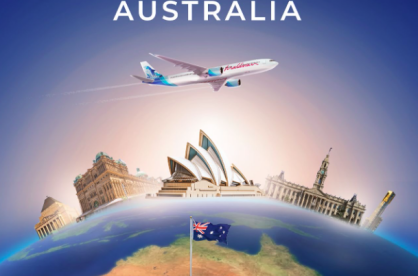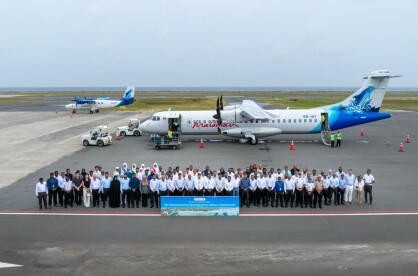Maldives fisheries
A snapshot glance at the nation's fisheries sector.

Greenpeace
A snapshot glance at the nation's fisheries sector.

Greenpeace
Sometimes, what has been so deeply ingrained in our way of life gets overlooked when considering development and benchmarking, in terms of economic importance. In the case of the Maldives, fisheries, and by association, agriculture, are two sectors that have taken a backseat to tourism. Yet their importance is undeniable, and any falter on either front could have hugely detrimental effects on Maldivian society.
This administration has taken renewed strides towards further strengthening and developing the sector, and this is heralded in the National Fisheries and Agricultural Policy (NFAP), published in 2019. The NFAP focuses on big dreams of the bigger picture sort, with decreasing the dependancy on imports, ensuring food security, and developing industrial levels of self-sustainability and furthering socioeconomic growth.
According to statistics, nearly 71 percent of the animal protein consumed by Maldivians is credited to fish, which is rightfully the largest percentage on a global sense. Furthermore, the demand for fisheries and agricultural products continues to grow not only due to increasing population, but also due to the speedy increase in the number of tourists each year. What is important now is to be able to not only meet the demands within the local jurisdiction, but to also develop and extend the reach of Maldivian fisheries products to the wider global consumer-base.
In 2018, the government reaffirmed its commitment towards the development of the fisheries and agriculture sectors by issuing and renewing 21-year leases for 15 uninhabited islands dedicated to commercial fisheries, 50 uninhabited islands for commercial agriculture and eight additional uninhabited islands for both commercial fisheries and agriculture. The results has seen the fisheries sector contributing nearly 96 percent to the country’s total merchandise export in 2018, which totals about MVR2.7 billion.
According to statistics from the Maldives Customs Service, 920 exports to 54 countries worth MVR1.9 billion has been recorded from January 2021 to October 2021. These exports include live ornamental fish, fish roe, smoked fish, fish chips, fresh fish, chilled fish, or frozen consumable fish such as yellowfin tuna, albacore, long finned tuna and many more.
Some of the celebrated and awarded companies in the industry include Horizon Fisheries Private Limited; the biggest exporter of value added products, MIFCO; the largest exporter of raw material, and ENSIS; the largest fresh yellow fin tuna exporter.
With these great values comes the responsibility of managing the stocks as well. A thorough assessment conducted by the Ministry of Fisheries, Marine Resources and Agriculture identified many challenges faced by the industry, one being the high and increasing dependency on imported goods as well as insufficient capacity-building and institutional support. In addition, lack of market access, inadequate transport systems, as well as poor environmental management and insufficient food safety controls were also noted in their findings.
There is concern in the regulations to ensure sustainable fishing as demands increase and quotas are expected to be met. It casts a vicious cycle of climate change affecting the biodiversity of marine life causing a decline in fish catches, which leaves fishermen to be more inclined to overfishing so as to meet with the increasing demand for fish products. Overfishing does not mean fishing more than a set quota; it means that fish are being extracted faster than they can propagate naturally, leading to an overall, and permanent, decline in their numbers.
The lack of air cargo and sea transportation relative to the yield of fishing is a limitation to production and sale flows. Another bump on the sales flow comes from a lack of awareness on good aquaculture and high-value market products, due to which the industry falls a step short in reaching its full potential in the market.
The UN’s Food and Agriculture Organisation (FAO) is one of the strongest supporting bodies for the development of the fisheries sector in the Maldives. They place value in strengthening food security and boosting the sustainability of rural livelihoods, with a focus on climate-smart agriculture and fisheries development.
With the cooperation of the FAO, the NFAP presents close to 20 objectives in developing the fisheries industry. Focal areas are sustainable management of natural resources, market access and economic growth, and institutional capacity-building. Each area entails multiple objectives in strengthening the running system of the industry by not only building sustainable yields, but also by managing and strengthening the standards for technological equipment, vessels, technique, and even the roles of both state-funded and private companies within the industry.
The NFAP intends to implement policies that can build an industry of ecological resilience, where companies and stakeholders adapt to more sustainable programs and tools. This includes ecological transport systems with lower emission rates of pollutants as a means of contributing to the protection of the biodiversity and effective control of marine life population. The goal is to maintain fisheries activities at both sustainable and profitable levels.
During the Fishermen’s Forum in 2020, concerns regarding the development and implementation of these policies were raised amongst the fishermen. The discussions built up from the need for licensing vessels and boats, for which the concerns were based more so on possible restrictions to their current fishing culture. It was discussed and assured that these policies were not to restrain their line of work, but to manage it in order to sustain and secure the industry as a whole.
Furthermore, these regulations are backed by the FAO so as to prevent any fallback in the Maldivian fishing industry during the implementing process. In addition to the support given for making and implementing policies and regulations, the FAO provides funds for fisheries and agricultural projects. The most recent projects funded by the FAO include:
These projects provide funding not only for the fishing industry, but for agriculture as well. Although the former two sectors have historically accounted for a relatively smaller share of the GDP in comparison to tourism, fisheries and agriculture are heavily depended on by the local population and has an undeniably big influence on the trade balance in bringing valuable foreign currencies while also contributing to the food security.



